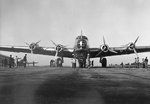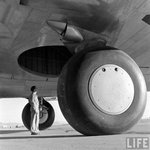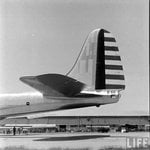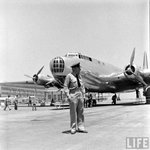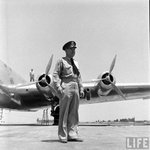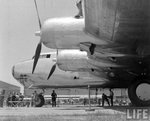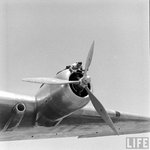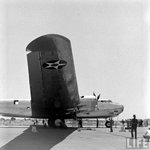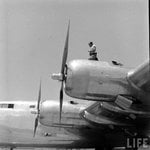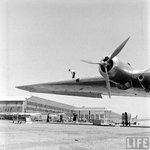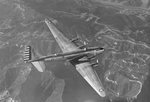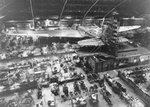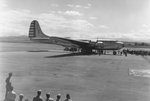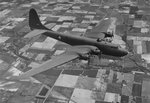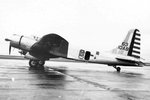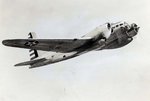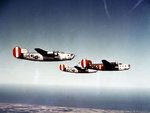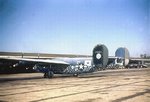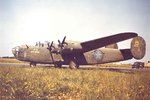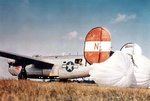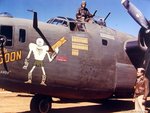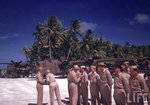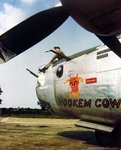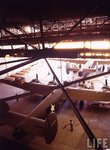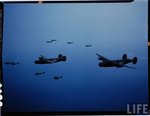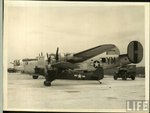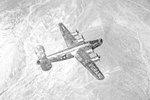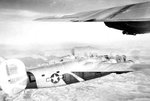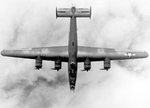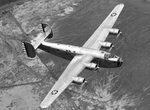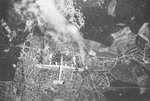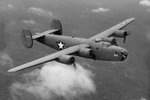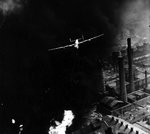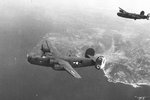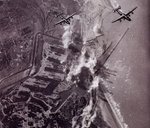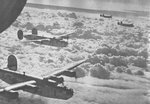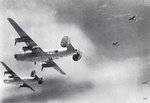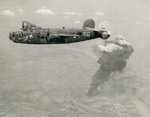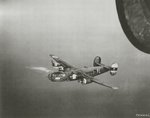- Thread starter
- #61
The Douglas XB-19 was the largest American aircraft built until the completion of the Convair B-36 in August of 1946. The XB-19 project had its origin in a secret Army Air Corps project of the mid 'thirties for an advanced long-range bomber. On February 5, 1935, the Army Air Corps initiated a secret project for an experimental long-range bomber, with the goal of seeing just how far the state of the art could be pushed. It was assigned the codename "Project D", and was classified top secret. No production was envisaged, since "Project D" was more of a proof-of-concept vehicle than it was a serious proposal for a production military aircraft.
Preliminary discussions were carried out with Douglas and Sikorsky, the only two companies which showed any interest in participating in the project. The Army wanted the prototype to be delivered by March 31, 1938. On July 9, 1935, the designation XBLR-2 was assigned to the Douglas proposal, the type symbol BLR standing for Bomber, Long Range. The BLR type symbol had been introduced in 1935 to cover large, long-range bombers. At the same time, the competing Sikorsky design was assigned the designation XBLR-3. A contract covering preliminary and detailed design, mock-up construction and testing of critical components was sent to Douglas in October of 1935 and was approved on October 18.
In March of 1936, wooden mockups of the Douglas and Sikorsky designs were inspected. At that time, the Douglas proposal was deemed superior, and the contract for the Sikorsky XBLR-3 was cancelled. Progress on the XBLR-2 proceeded rather slowly due to the shortage of funds caused by the limited military budget allocated for research and development during the Depression years 1935 to 1937. The aircraft was conceived as a large, four-engined, low-winged monoplane. A tricycle undercarriage was to have been fitted, which was still rather unusual for the time. This undercarriage was tested on a Douglas OA-4B Dolphin amphibian loaned back to the company by the Army.
The XBLR-2 was originally to have been powered by four 1600 hp Allison XV-3420-1 twenty-four cylinder liquid-cooled engines. The XV-3420 was basically a pair of V-1710 twelve-cylinder liquid-cooled Vee engines coupled together to drive a single propeller. On November 2, 1936, the Douglas company decided to substitute the 2000 hp Wright R-3350 air-cooled radial for the coupled Allisons originally specified. The separate BLR type symbol was abolished in 1936, and the XBLR-2 was redesignated B-19 in the B-for-bomber series. By late 1937, enough R D funds had been made available so that a contract change calling for the construction of a single prototype under the designation XB-19 was issued on November 19, 1937, but not approved until March 8, 1938. The serial number 38-471 was assigned.
Preliminary discussions were carried out with Douglas and Sikorsky, the only two companies which showed any interest in participating in the project. The Army wanted the prototype to be delivered by March 31, 1938. On July 9, 1935, the designation XBLR-2 was assigned to the Douglas proposal, the type symbol BLR standing for Bomber, Long Range. The BLR type symbol had been introduced in 1935 to cover large, long-range bombers. At the same time, the competing Sikorsky design was assigned the designation XBLR-3. A contract covering preliminary and detailed design, mock-up construction and testing of critical components was sent to Douglas in October of 1935 and was approved on October 18.
In March of 1936, wooden mockups of the Douglas and Sikorsky designs were inspected. At that time, the Douglas proposal was deemed superior, and the contract for the Sikorsky XBLR-3 was cancelled. Progress on the XBLR-2 proceeded rather slowly due to the shortage of funds caused by the limited military budget allocated for research and development during the Depression years 1935 to 1937. The aircraft was conceived as a large, four-engined, low-winged monoplane. A tricycle undercarriage was to have been fitted, which was still rather unusual for the time. This undercarriage was tested on a Douglas OA-4B Dolphin amphibian loaned back to the company by the Army.
The XBLR-2 was originally to have been powered by four 1600 hp Allison XV-3420-1 twenty-four cylinder liquid-cooled engines. The XV-3420 was basically a pair of V-1710 twelve-cylinder liquid-cooled Vee engines coupled together to drive a single propeller. On November 2, 1936, the Douglas company decided to substitute the 2000 hp Wright R-3350 air-cooled radial for the coupled Allisons originally specified. The separate BLR type symbol was abolished in 1936, and the XBLR-2 was redesignated B-19 in the B-for-bomber series. By late 1937, enough R D funds had been made available so that a contract change calling for the construction of a single prototype under the designation XB-19 was issued on November 19, 1937, but not approved until March 8, 1938. The serial number 38-471 was assigned.

